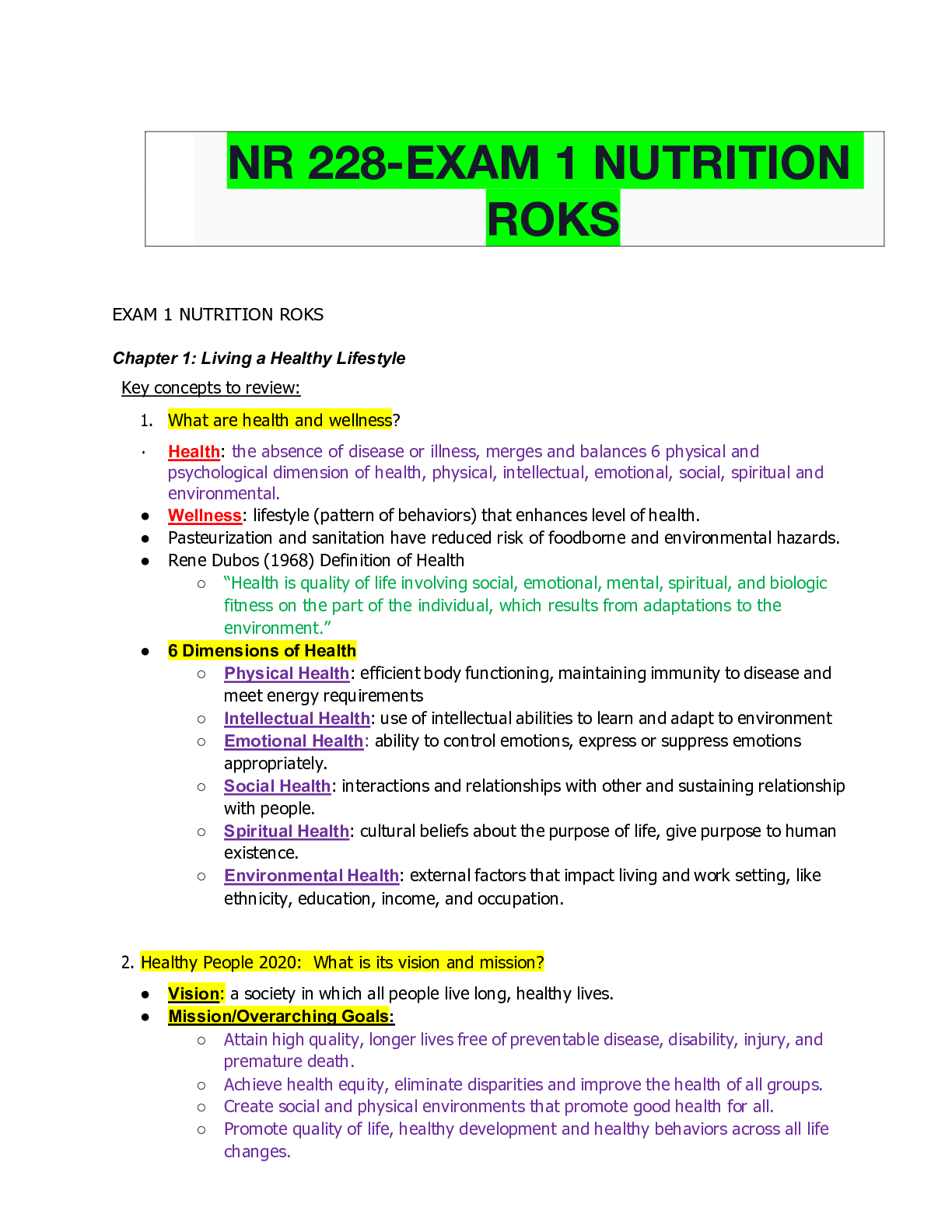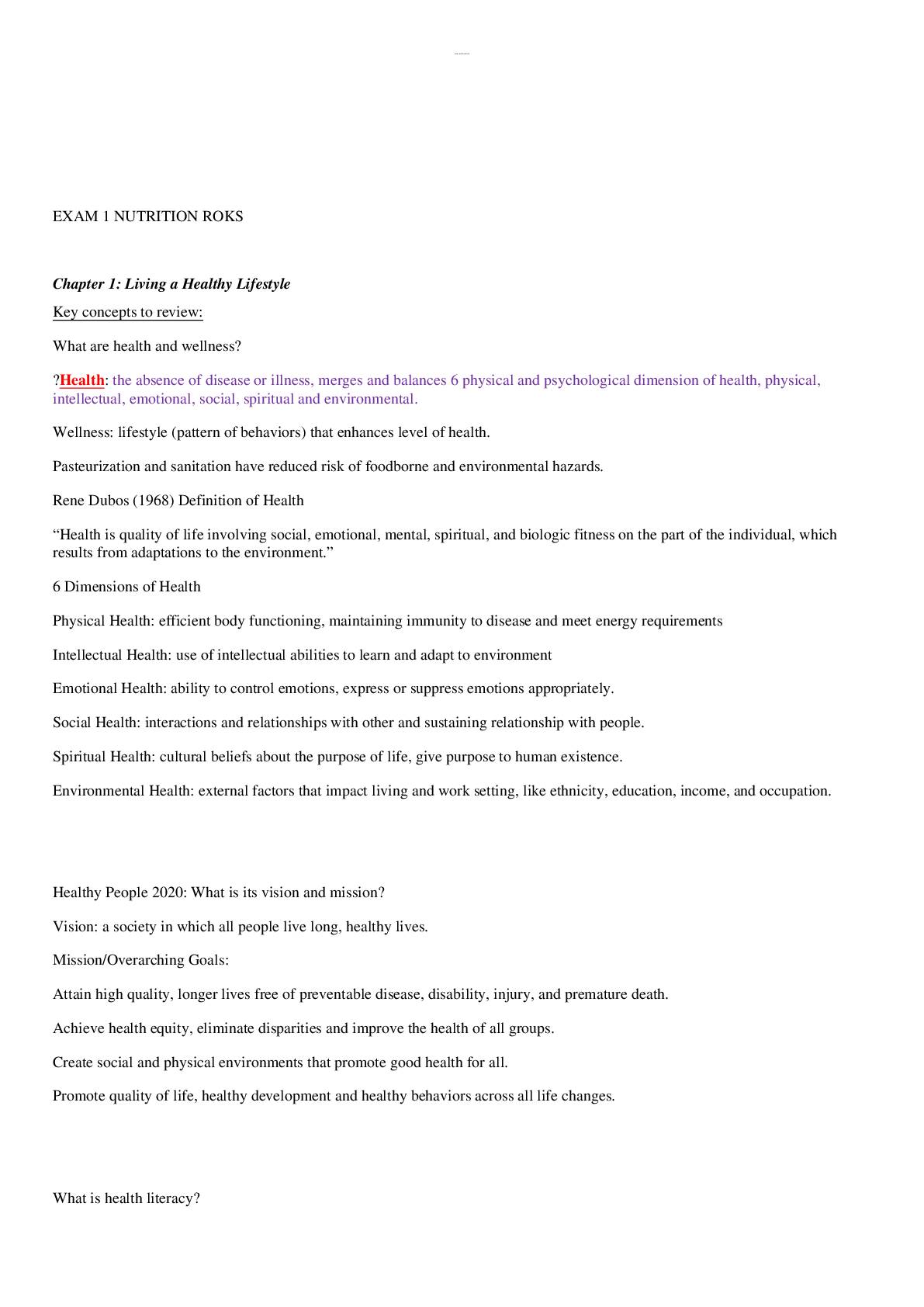NUTRITION NR228EXAM 1 NUTRITION ROKS (1)
Document Content and Description Below
1. What are health and wellness? Health: the absence of disease or illness, merges and balances 6 physical and psychological dimension of health, physical, intellectual, emotional, social, spiri... tual and environmental. ● Wellness: lifestyle (pattern of behaviors) that enhances level of health. ● Pasteurization and sanitation have reduced risk of foodborne and environmental hazards. ● Rene Dubos (1968) Definition of Health ○ “Health is quality of life involving social, emotional, mental, spiritual, and biologic fitness on the part of the individual, which results from adaptations to the environment.” ● 6 Dimensions of Health ○ Physical Health: efficient body functioning, maintaining immunity to disease and meet energy requirements ○ Intellectual Health: use of intellectual abilities to learn and adapt to environment ○ Emotional Health: ability to control emotions, express or suppress emotions appropriately. ○ Social Health: interactions and relationships with other and sustaining relationship with people. ○ Spiritual Health: cultural beliefs about the purpose of life, give purpose to human existence. ○ Environmental Health: external factors that impact living and work setting, like ethnicity, education, income, and occupation. 2. Healthy People 2020: What is its vision and mission? ● Vision: a society in which all people live long, healthy lives. ● Mission/Overarching Goals: ○ Attain high quality, longer lives free of preventable disease, disability, injury, and premature death. ○ Achieve health equity, eliminate disparities and improve the health of all groups. ○ Create social and physical environments that promote good health for all. ○ Promote quality of life, healthy development and healthy behaviors across all life changes. 3. What is health literacy? ● Health Literacy: being able to receive and comprehend basic health concepts, such as nutrition and applying them to our own health decision.● Health literacy develops through education on topics related to health promotion and illness. ● Education Process of Health Literacy ○ Formal Education: purposely planned for implementation in a school setting. ○ Non-formal Education: organized teaching and learning events in hospitals, clinics, and community centers. ○ Informal Education: variety of educational experiences that occur through daily activities, like watching TV, reading newspapers and magazines, browsing the internet or conversing with other people. ● Health Context: takes into account the influence of culture, social, and individual factors with developing health literacy. ○ Cultural factors: ethnicity, religion, race ○ Social factors: setting that members receive support or lack of support for health promoting behaviors ○ Individual factors: choices we make on willingness to acquire then apply health knowledge. ● Health Literacy Actualization: being able to use acquired health knowledge and skills. [Show More]
Last updated: 2 years ago
Preview 1 out of 30 pages

Buy this document to get the full access instantly
Instant Download Access after purchase
Buy NowInstant download
We Accept:

Reviews( 0 )
$18.00
Can't find what you want? Try our AI powered Search
Document information
Connected school, study & course
About the document
Uploaded On
Sep 01, 2021
Number of pages
30
Written in
Additional information
This document has been written for:
Uploaded
Sep 01, 2021
Downloads
0
Views
102

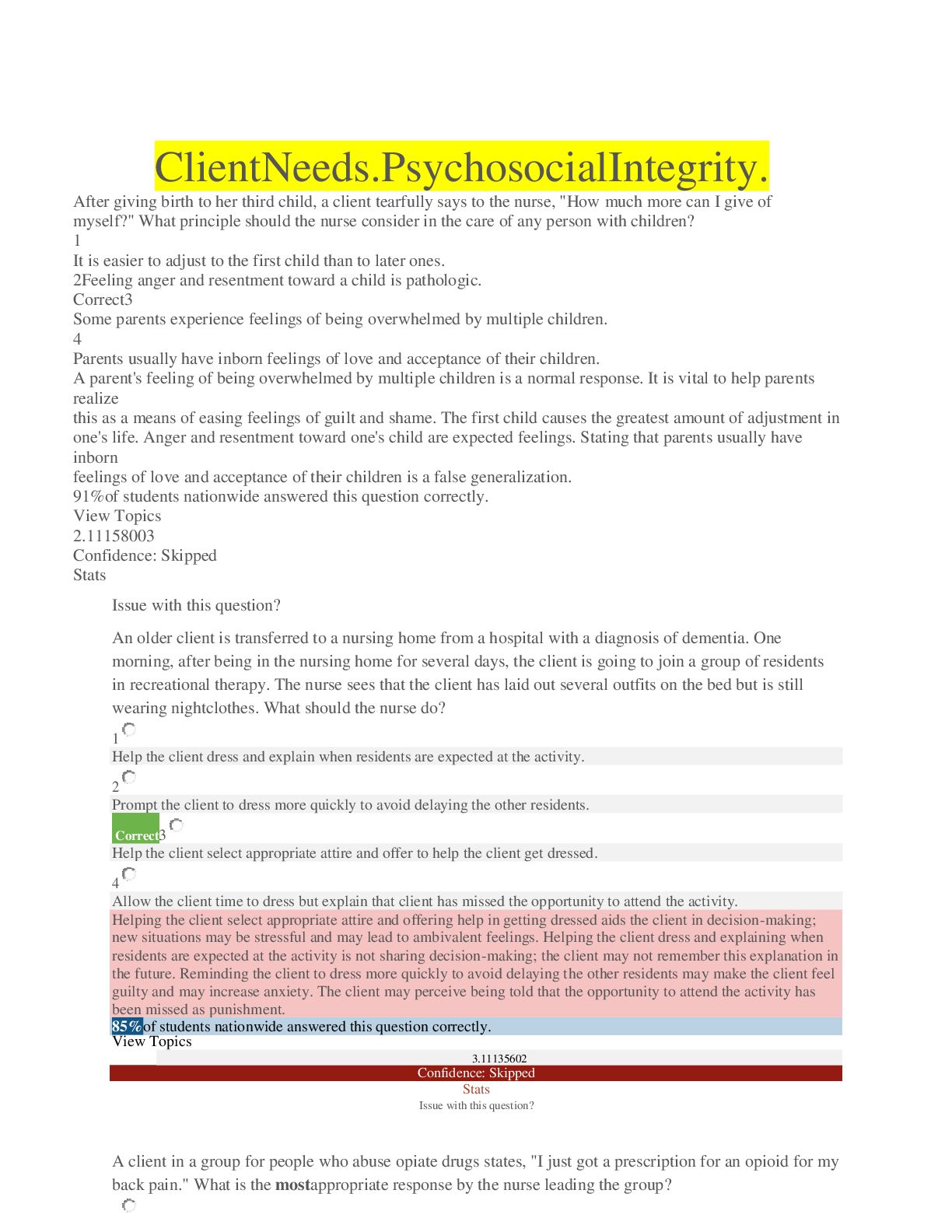



.png)
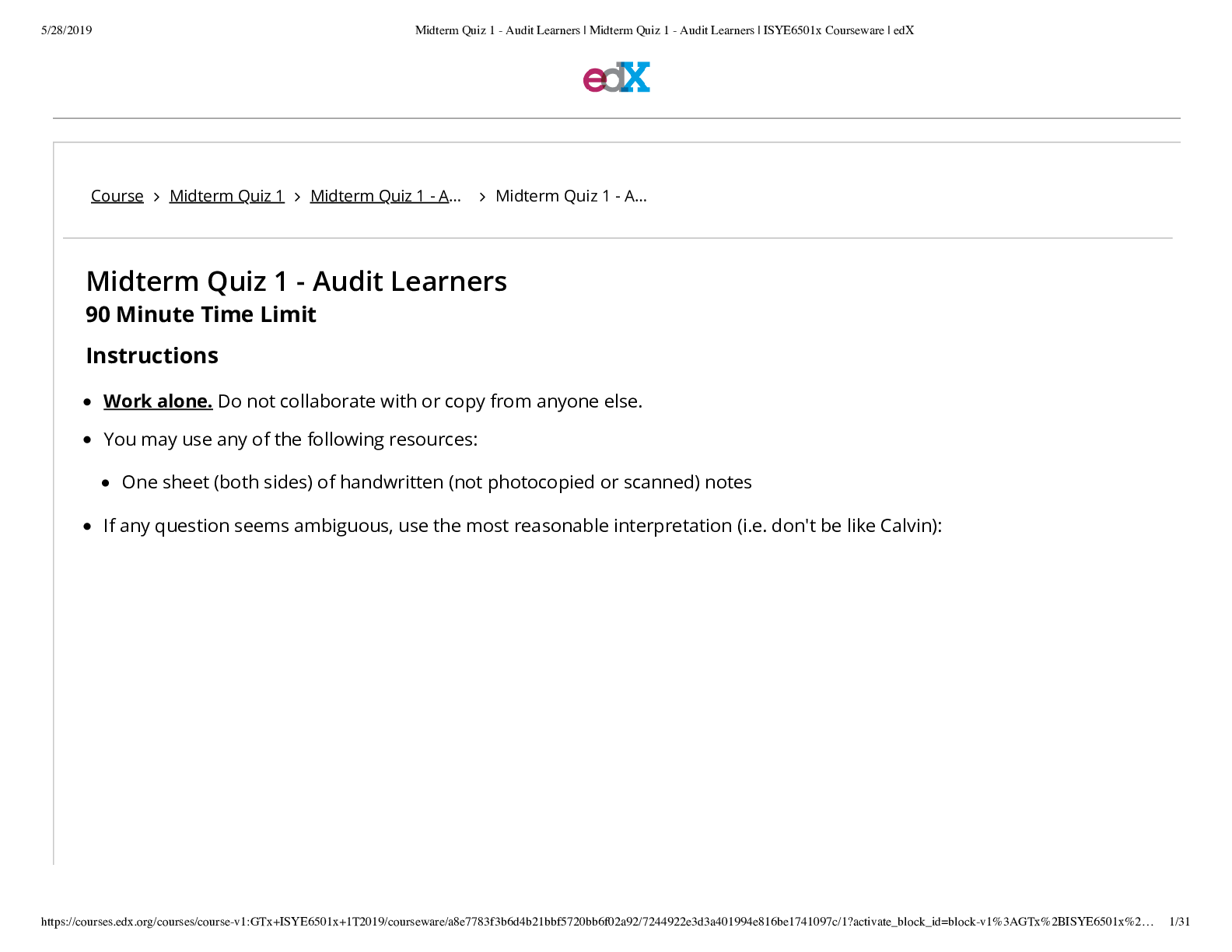
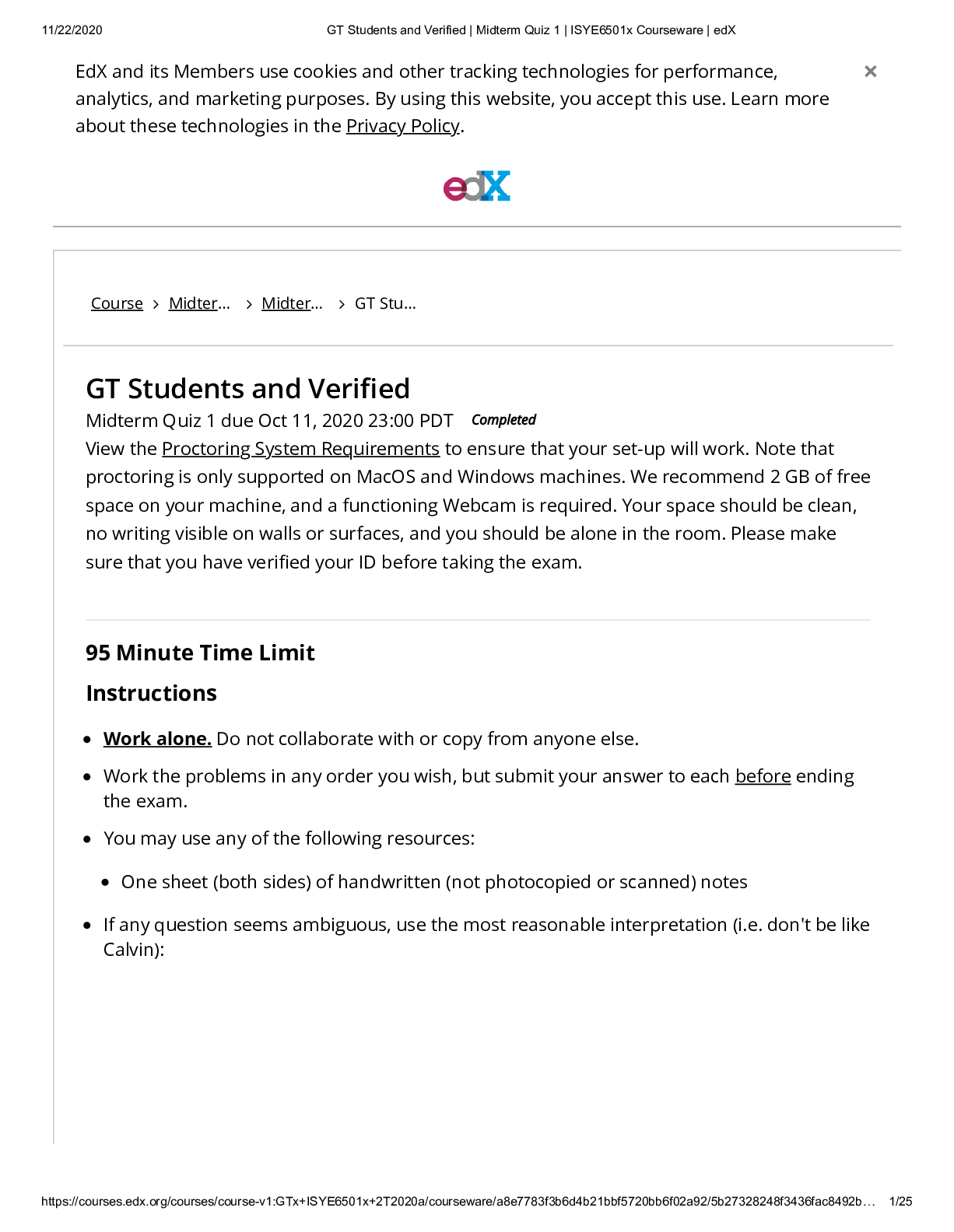

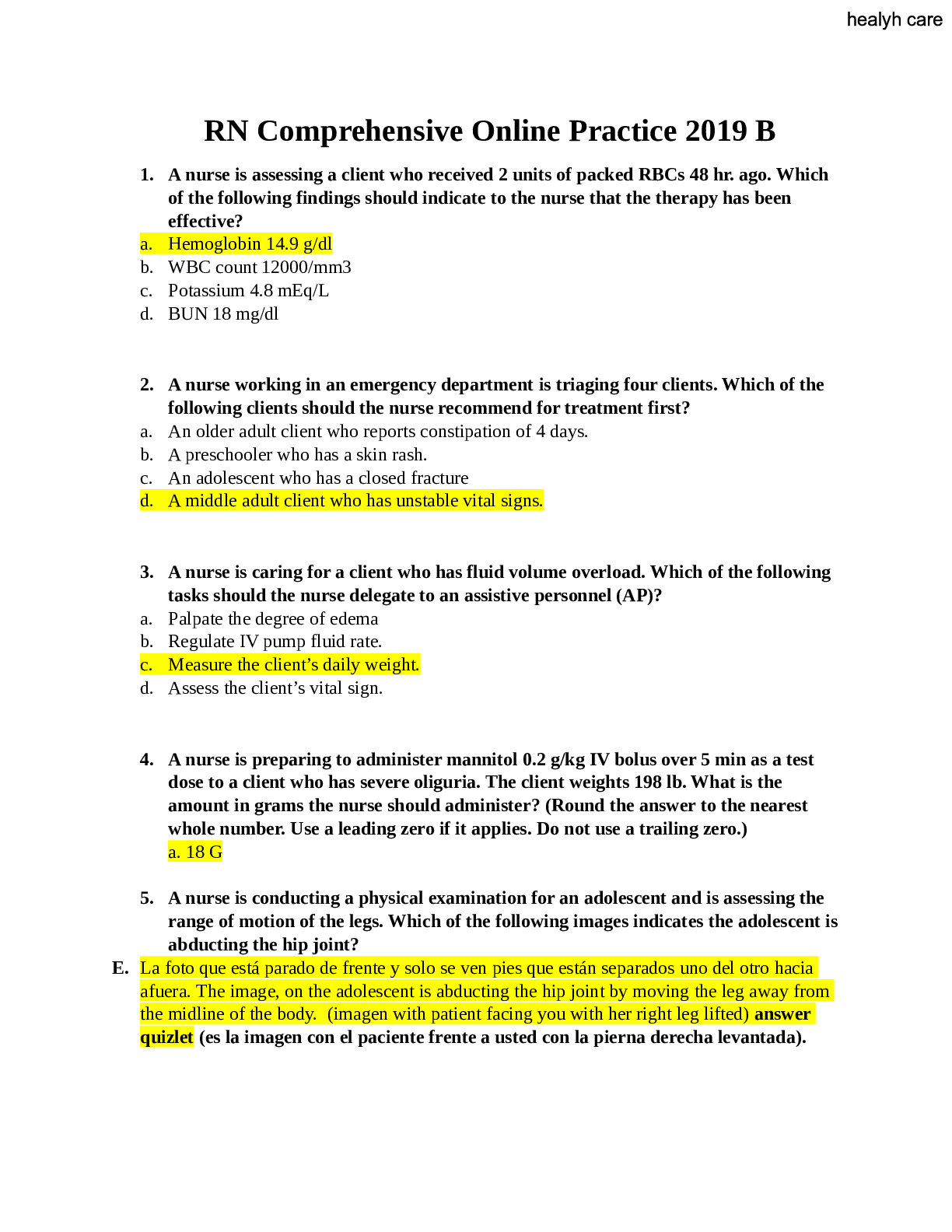
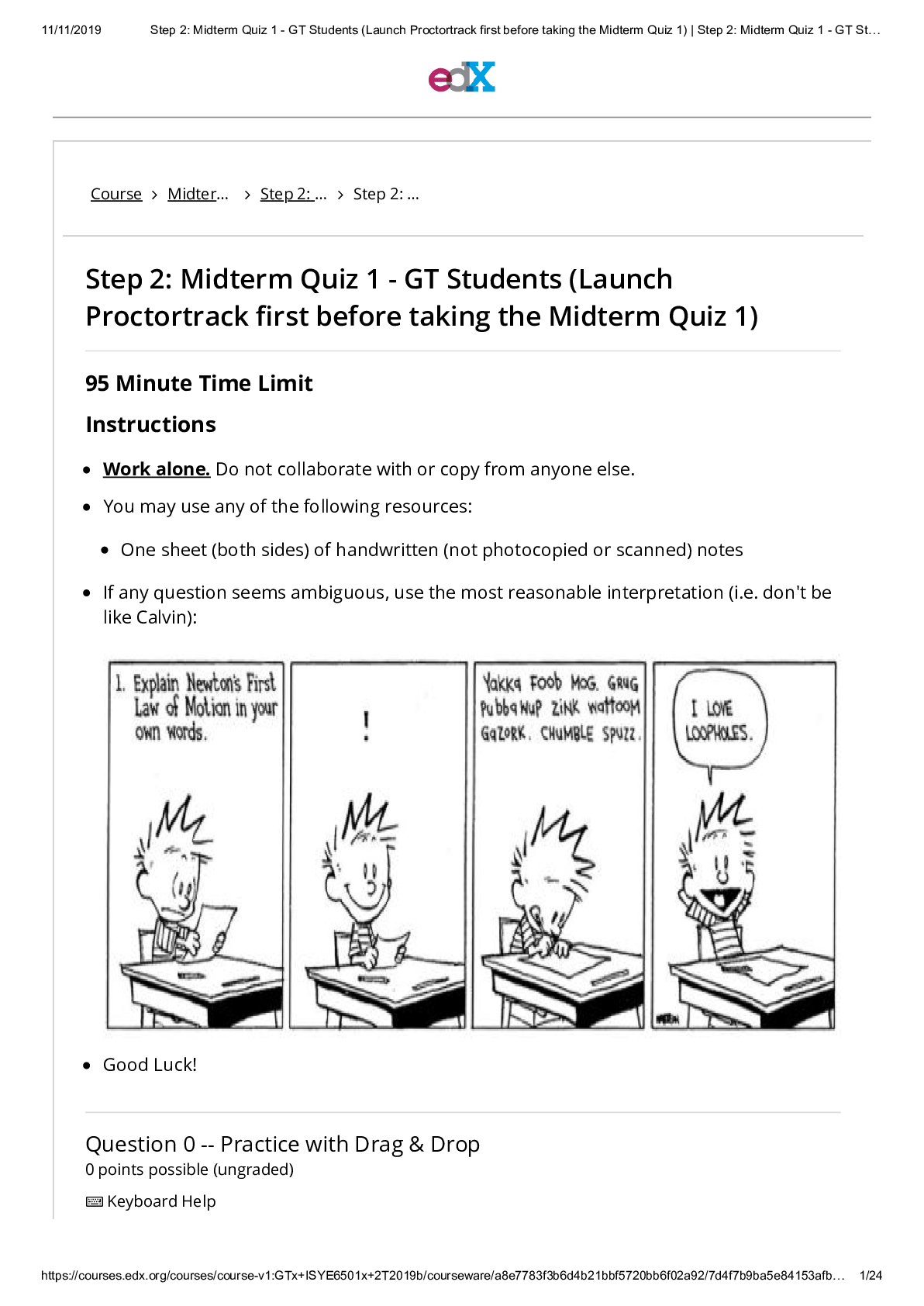
.png)
.png)
